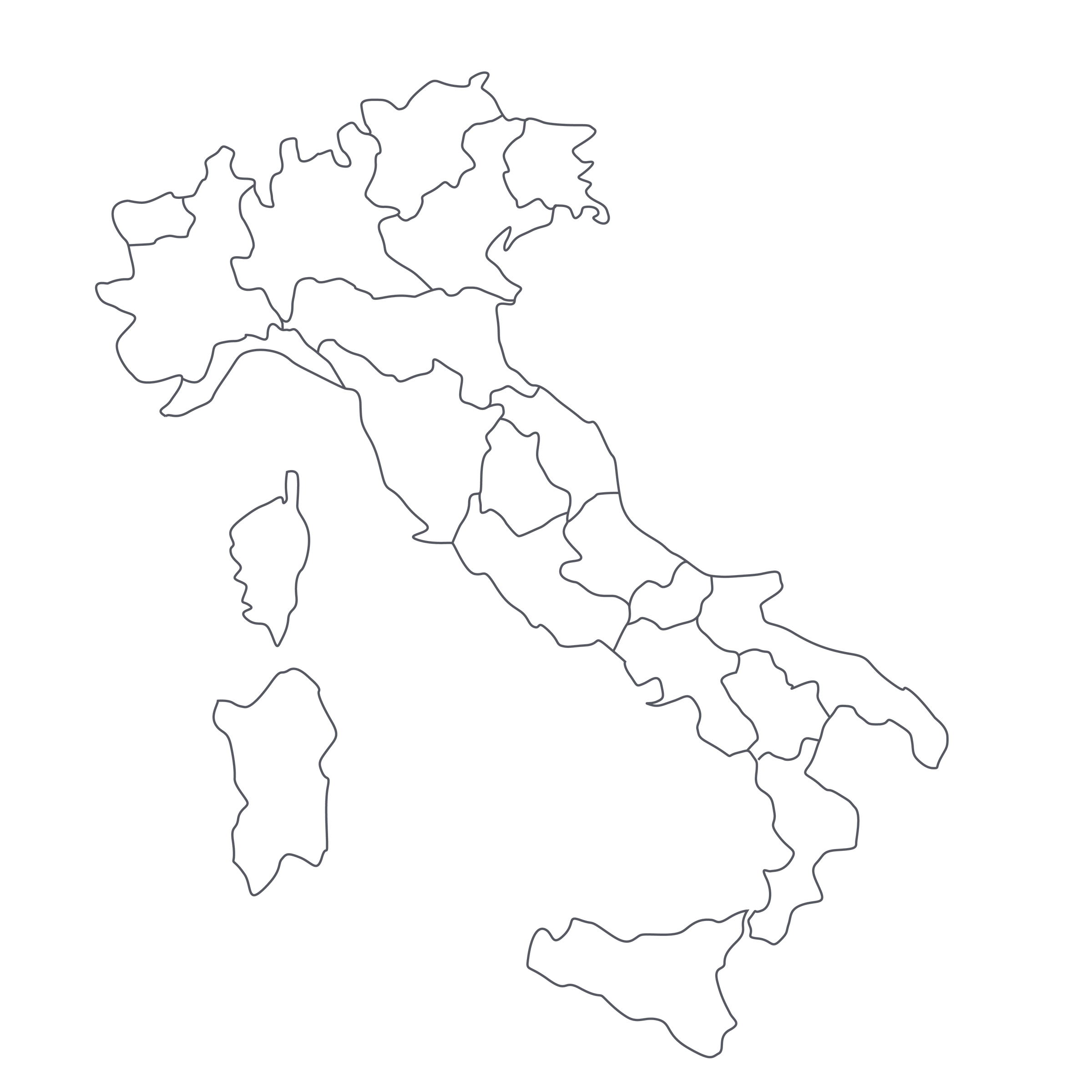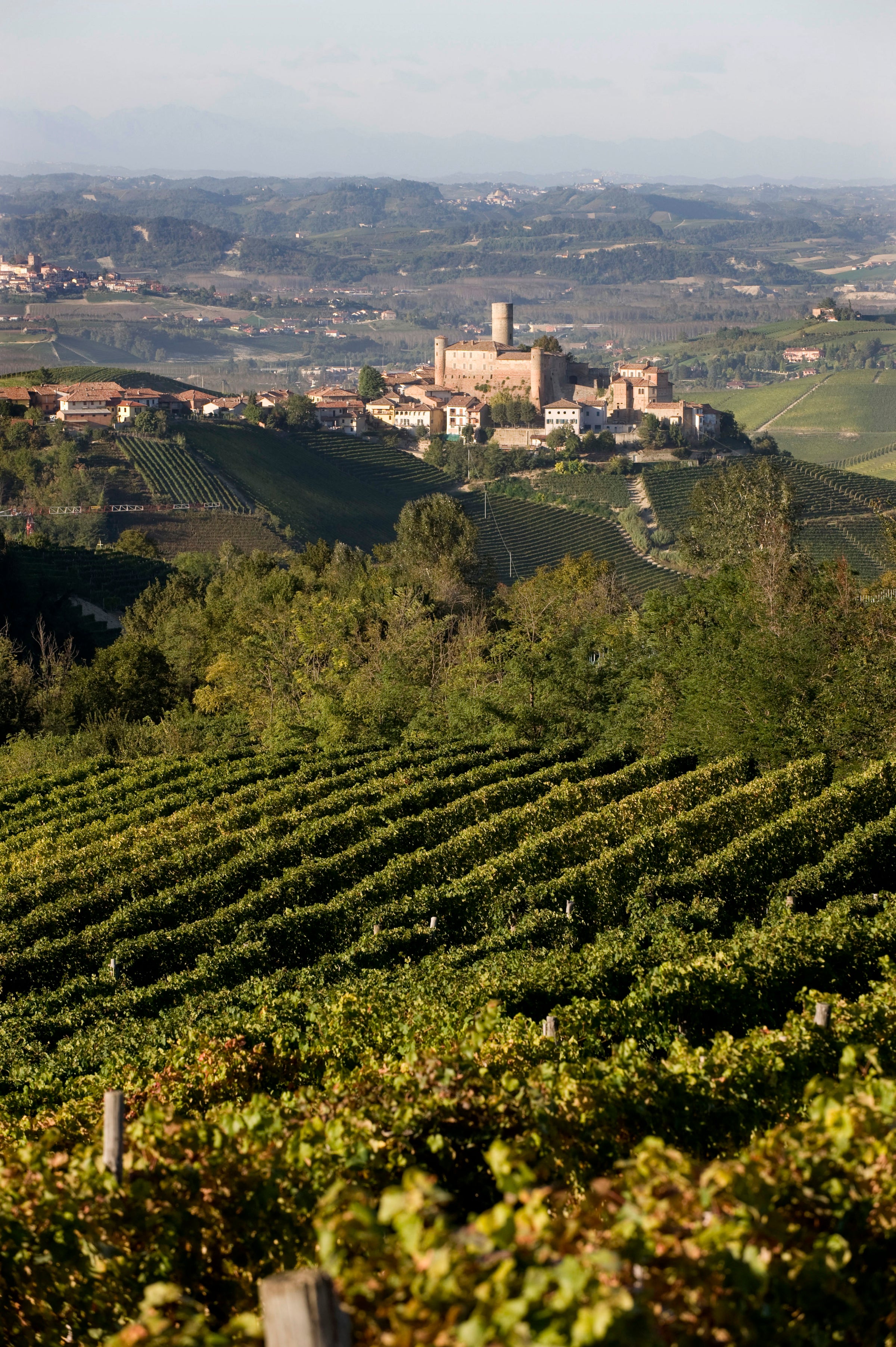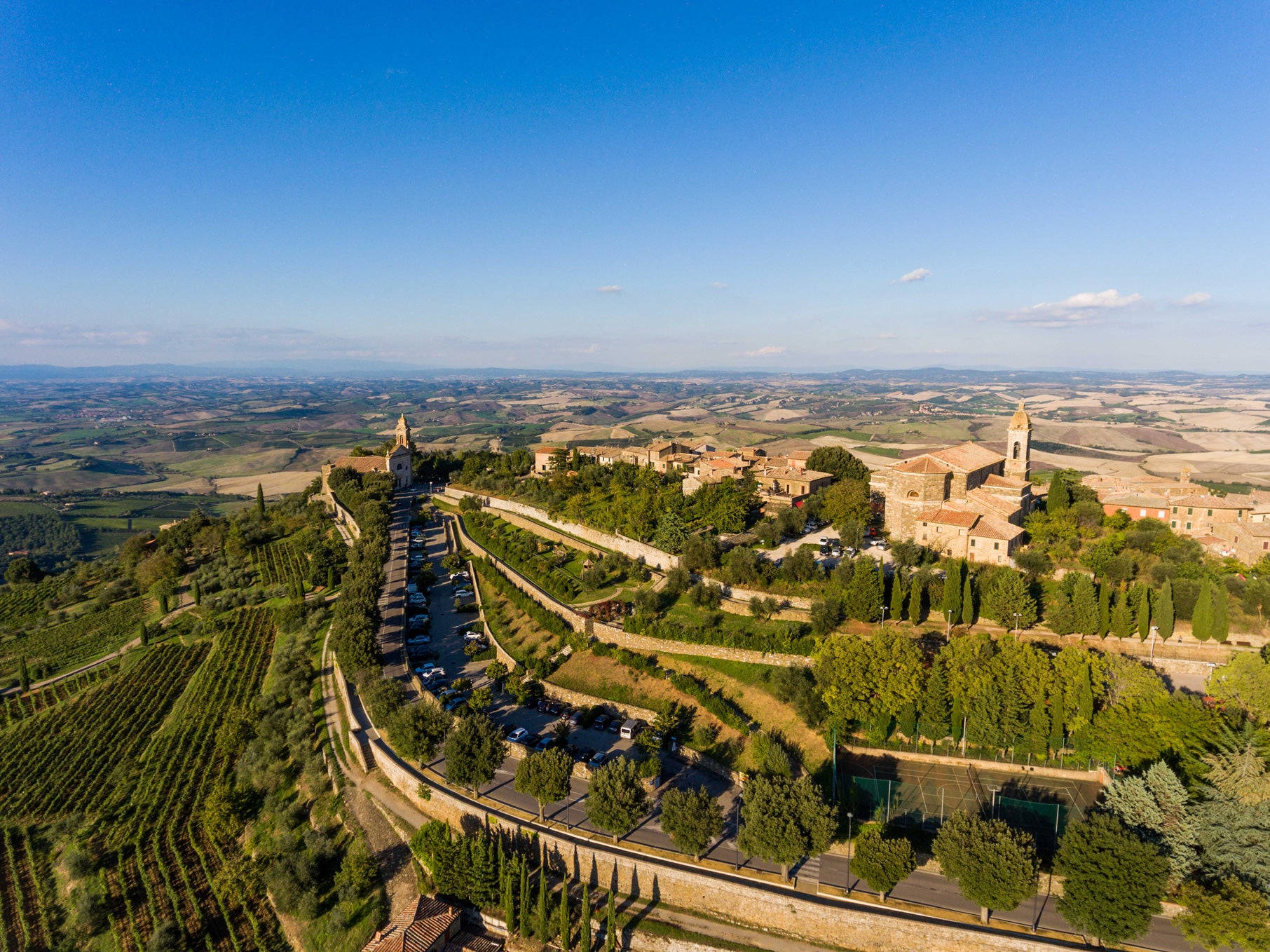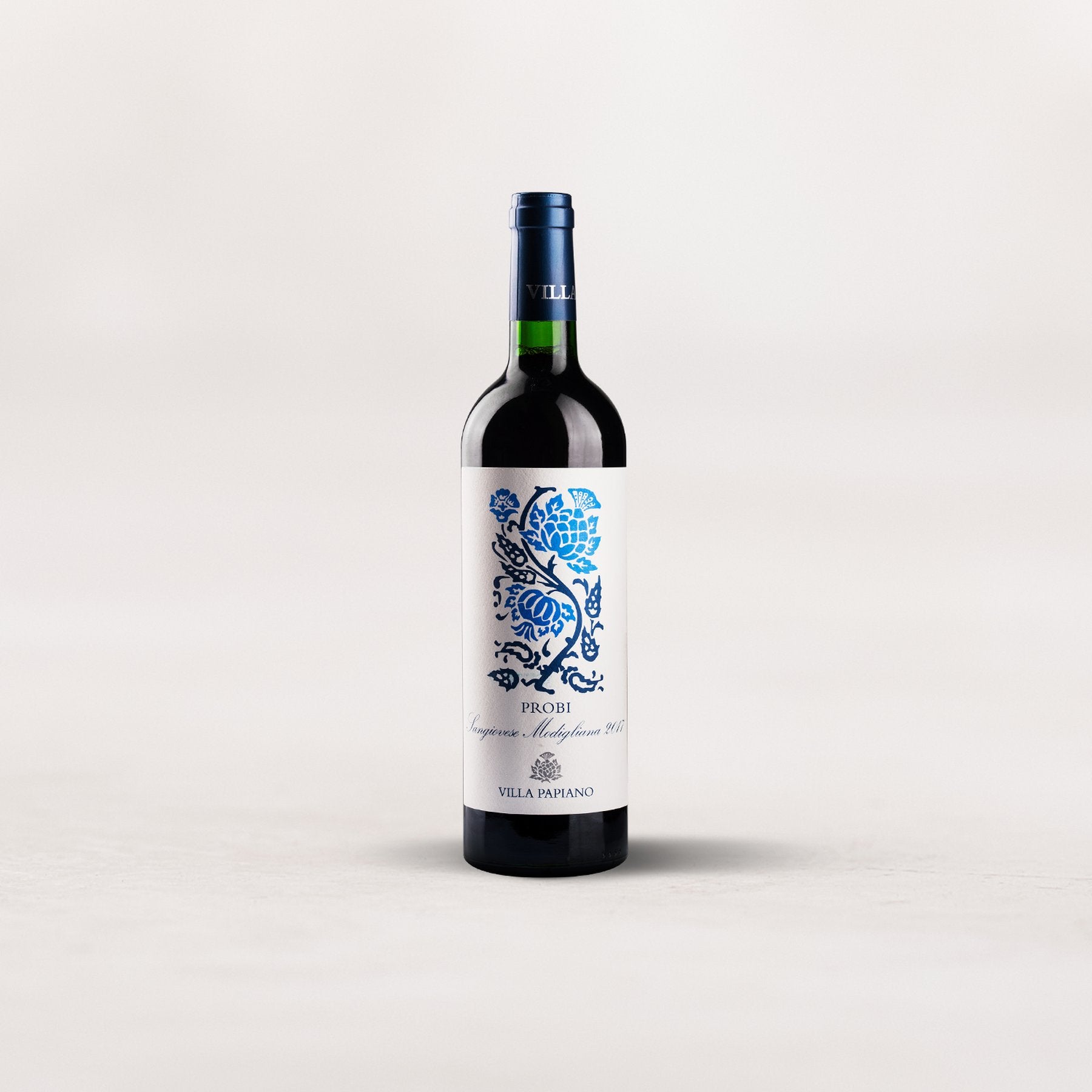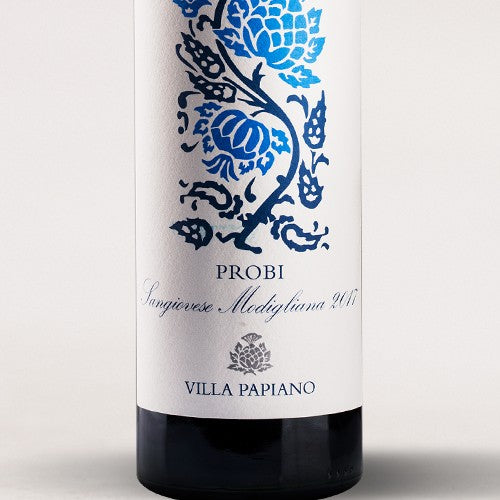If you love Sangiovese (and who doesn’t?), today’s wine must not be missed. We’ve been talking a lot lately about Romagna, and the Sangiovese grown in its Apennine foothills southeast of Bologna…well, Villa Papiano is the region’s reference-point producer. Perched at more than 500 meters of elevation in the village of Modigliana (one of many towns in this region recently plagued by heavy flooding and landslides), Villa Papiano is one of a handful of estates that put “Romagna Sangiovese” on equal footing with the best wines from neighboring Tuscany.
Proprietor Francesco Bordini, who runs this historic property with his siblings, has continued the work of his legendary father, Remigio, an agronomist responsible for planting most of the greatest Sangiovese vineyards in the area. “Probi” is a steep, terraced site first planted in the 1960s, and its vines are still trained in the alberello (“bush”) method, producing some of the most aromatically complex, finely structured Sangiovese wines I’ve ever had—and I’ve had a lot. Many of you have already enthusiastically embraced Romagna Sangiovese, but if there’s any lingering doubt out there, this elegant 2017 will seal the deal.
Like his father, Francesco Bordini isn’t just an agronomist and winemaker but an outspoken advocate for his home region and its terroir. In addition to running Villa Papiano, he consults to more than a dozen wine estates in the immediate area around Modigliana (many of whom, like Noelia Ricci, have been featured on SommSelect), which has undoubtedly helped to raise the profile of Romagna Sangiovese in the process. Stretching roughly from Bologna to Rimini, the production area (DOC) for Romagna Sangiovese climbs from lower elevations near towns such as Forlì and Faenza and up into the foothills of the Apennine Mountains, and in 2011, the appellation was re-defined so that 12 villages, Modigliana among them, could be classified as unique sub-zones, or “crus,” that could be cited on labels. Many of these villages are very close to the regional border with Tuscany, and in fact most of the area was part of Tuscany until 1923, when Mussolini—a native of Predappio—redrew the boundaries.
The classification used is called an MGA (for Menzione Geografica Aggiuntiva), a “geographic indication” bestowed upon a single vineyard or village, as in France. “Modigliana Sangiovese” in this instance could rightly be compared—both conceptually and stylistically—to a “village” red Burgundy from, say, Gevrey-Chambertin. Known not just for its high elevations but for its sandstone-heavy soils, Modigliana is a place name of serious import—thanks in no small part to Villa Papiano.
“Probi” is the name of a single vineyard that climbs to 500+ meters of elevation. The terraced site was first planted in 1970 and was “restored” in 2001, although Bordini kept the bush-trained vines rather than convert to another system. Farming at Villa Papiano has been Certified Organic since 2009, and for this bottling, hand-harvested grapes are fermented spontaneously and aged for 12 months in a combination of concrete tanks and large oak casks. Perhaps the biggest distinguishing feature of this wine is that it spends 24 months aging in bottle before it is released; it is, as you might expect, seamless and elegant and still has many more stories to tell.
In the glass, this 2017 still displays a relatively youthful ruby-garnet core with mostly pink reflections at the rim. The aromas are perfumed and wonderfully ripe, leading with concentrated notes of blackberry, plum, and pomegranate and continuing into more savory/floral territory: tobacco leaf, anise, rose petals, aromatic herbs, and underbrush. It is a shade over medium-bodied, with fine grained tannins and palpable energy—one of the more “Burgundian” examples of Sangiovese I’ve had in a while. The biggest takeaway for me was its impressive combination of energy and elegance: Decant it about 30 minutes before serving at 60 degrees in Burgundy stems, and where food is concerned, the first place to look for inspiration is Bologna. Few food towns do it better, and few Sangioveses deliver like this one. Enjoy!
